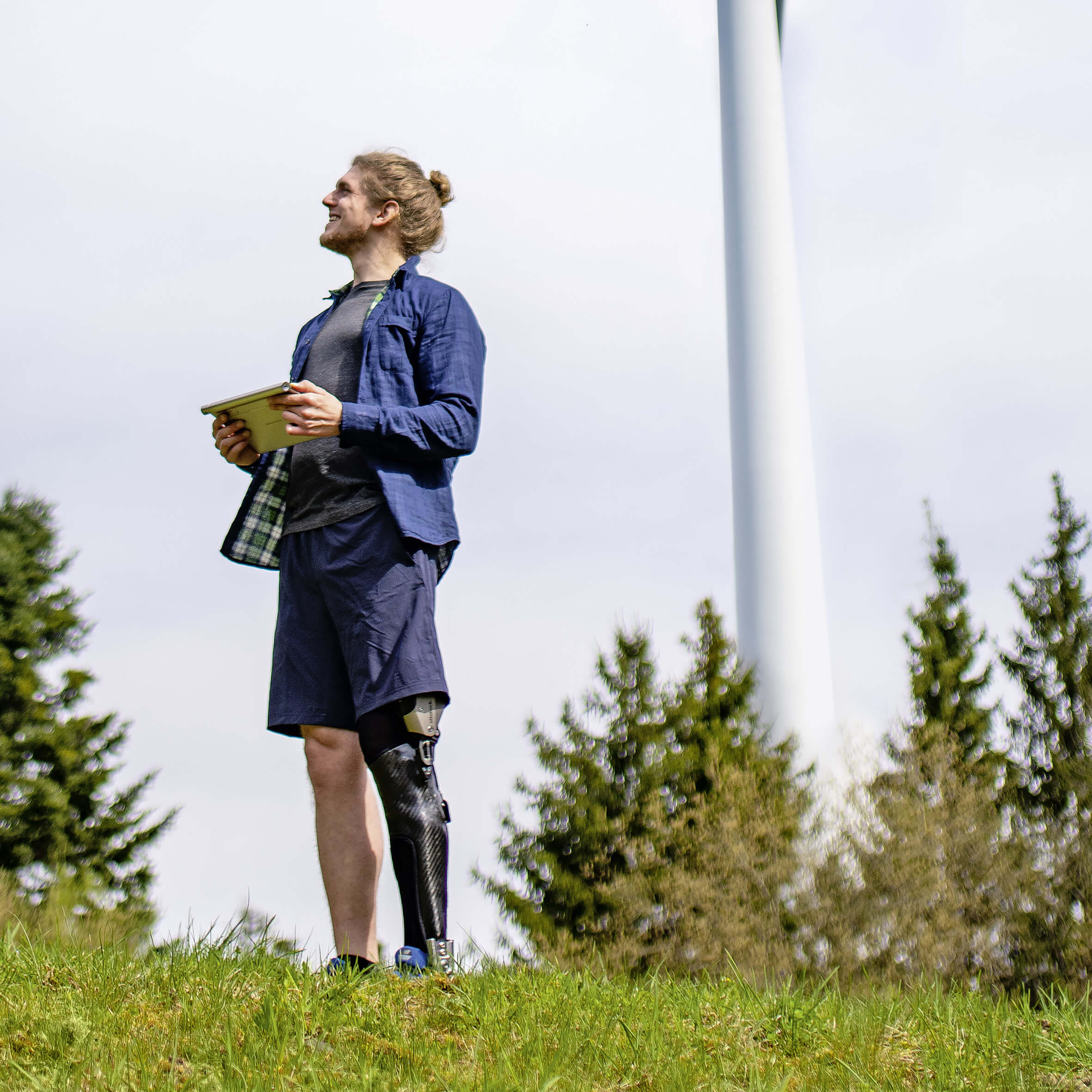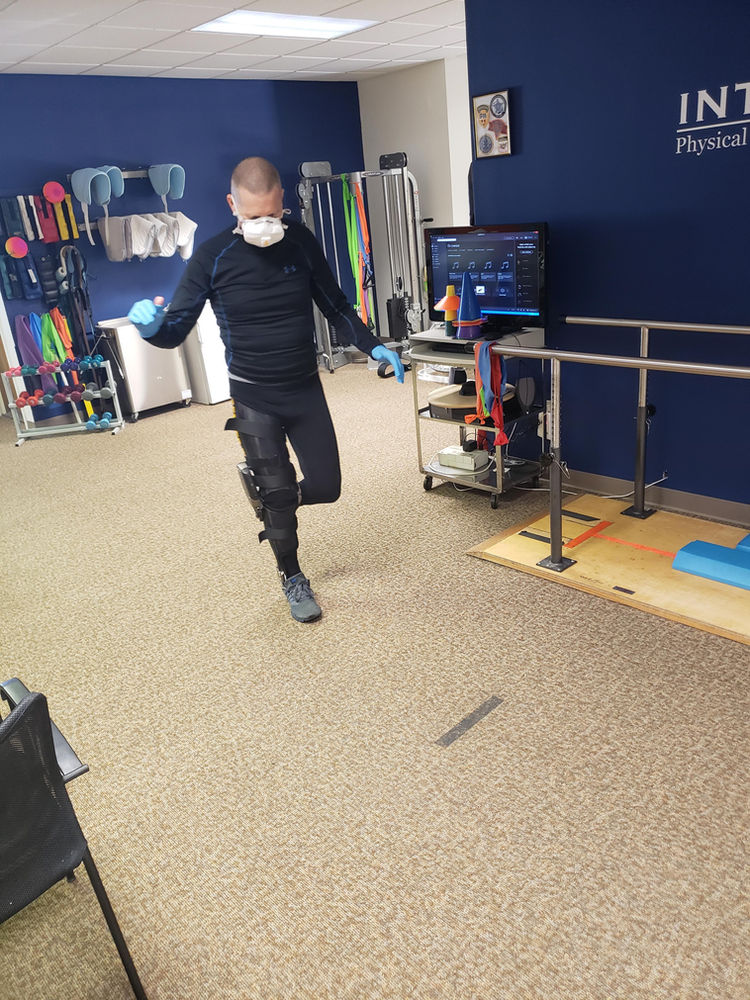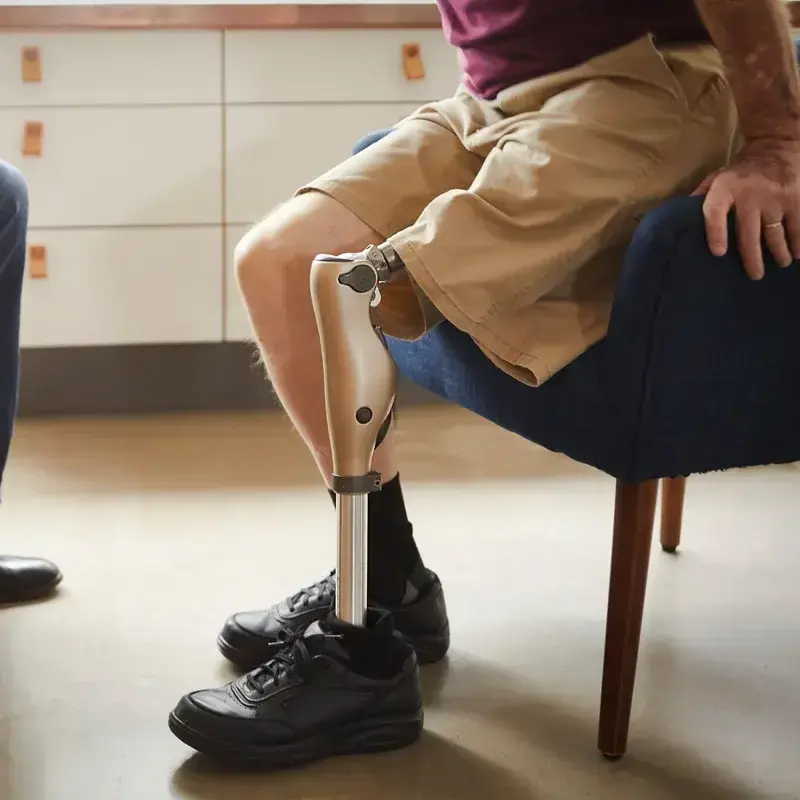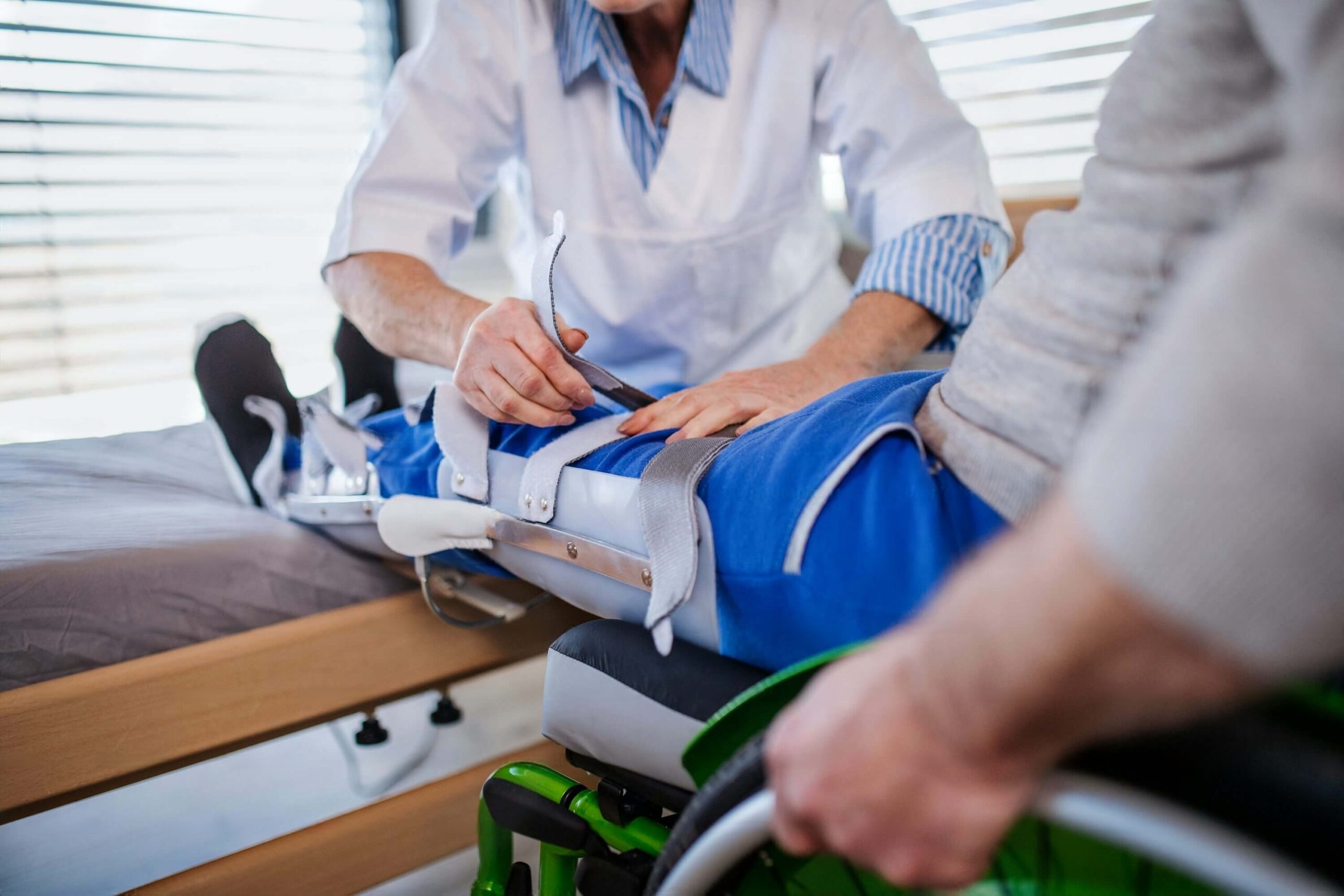For several months Scott experimented and grew adept with his ‘psychedelic’ KAFO; but he also pursued research on his own and discovered the C-Brace from Ottobock, described as “the world’s first mechatronic stance and swing phase control orthosis (SSCO®) system, which controls both the stance and swing phase hydraulically with microprocessor sensor technology.”
Where conventional paralysis orthoses are limited to releasing and locking the knee joint, the C-Brace supports the wearer during all phases of the gait cycle, guided by the microprocessor’s ability to identify and adapt to everyday situations in real-time. Lawall’s Juan Cave, MSOP, CPO, recognized Scott as an ideal candidate who could benefit from the C-Brace:
“Ken is a very active athletic guy,” Cave observed. “Before his stroke, he had been in the military, and he was doing CrossFit training and following a serious fitness regiment. The KAFO he was wearing had gotten him on his feet and able to walk, but it was limiting his ability to reach his full potential. I had gone to a class in Texas last year to become a specialist in the C-Brace, and I thought he’d be a great candidate because he was still young and able to move some parts of his body in order to propel himself forward to walk.”
“After experiencing the test, he was all in!” Cave recalls. “He was enthusiastic, confident, and committed. We just had to convince the VA (Veterans Administration) that he was an appropriate candidate in order to justify their funding the device—and he’s a very convincing person!”
Scott started the funding approval process through TriCare and again through the VA in September. Ultimately, his appeal to his Congressman, New Jersey U. S. Representative Jeff Van Drew, for assistance with his issues as a Veteran, helped expedite the VA approval. The C-Brace Scott was fitted with in May 2020 has been everything Cave anticipated, and after his first month using it, Scott is delighted.
“The microprocessor is very compact and streamlined, about 2” thick, and is attached to the side of his KAFO a few inches above his knee;” Cave points out. “The hydraulics control the amount of resistance in the device, to give him the support he needs. Within a week of receiving the brace, he was able to walk more than he’d ever walked with the original KAFO. As an athlete, he’s competitive, always trying to improve his mile time for walking. Once he put the brace on, he was able to drop five minutes off his time almost instantly; it was amazing.” Since every C-Brace is custom made and designed for a patient’s specific anatomy and indication, adjustments are required to ensure an ideal fit.
“Ken is so active; the first day that he put it on he was trying to go up and down stairs, trying to squat, moving around—it was just a lot for the device; we had to fine-tune it a little to suit his needs and give him the best experience with it,” Cave explains.
While the C-Brace was being re-adjusted, Scott reverted to the KAFO and was sharply aware of the differences. “With the C-Brace my center of gravity is in the middle. I’m more stable, and not leaning to the left anymore, so I’ve taken the strain off my back and my posture is better. The amount of energy it takes to get the leg to move and accept my gait, has got to be at least 90% less than the KAFO—it’s like night and day! “Since then,” Scott says happily, “I’ve been rockin’ and rollin’!”
A month after receiving the C-Brace, he had already clocked 178 miles on its monitor. The C-Brace has made a big difference in his confidence and his carriage: “With the KAFO I would have to go up the stairs one step at a time, with one stiff leg. I couldn’t walk up or down the stairs in an upright position. With the C-Brace I can hold onto the railing and walk up and down the stairs like a normal person. Instead of managing 800 meters with the KAFO, I can walk two or three miles with the C-Brace without a problem.”











